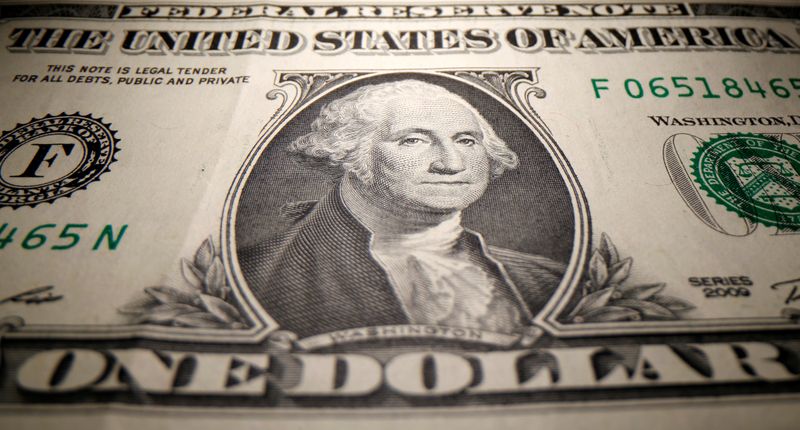By Karen Brettell
NEW YORK (Reuters) – The dollar gained on Thursday and was on track for a monthly increase of 1.69% against a basket of currencies as U.S. data showed a mixed picture of the American economy, while the euro was weighed down by cautious comments by a leading European Central Bank hawk.
U.S. consumer spending increased by the most in six months in July, with an 0.8% increase, but slowing inflation strengthened expectations that the Federal Reserve would keep interest rates unchanged next month.
The personal consumption expenditures (PCE) price index rose 0.2% last month, matching June’s gain.
It comes after a string of data this week, including a drop in job openings to the lowest level in nearly 2-1/2 years in July, raised concerns that the economy is slowing.
“The dollar is faring better as today’s data suggests America’s economic glass remains half full,” said Joe Manimbo, senior market analyst at Convera in Washington.
However, “the dollar does remain in a hole for the week, and that’s because weaker numbers earlier this week cast doubt on the Fed hiking again.”
The dollar index was last up 0.48% at 103.59. It has fallen from 104.44 last Friday, the highest since June 1.
Fed funds futures traders see an 89% probability that the U.S. central bank will leave rates unchanged at its September meeting, and are pricing in a 45% likelihood of a hike in November, according to the CME Group’s FedWatch Tool.
Atlanta Fed President Raphael Bostic said on Thursday that monetary policy is already tight enough to bring inflation back down to 2% over a “reasonable” period.
Friday’s jobs report for August will be scoured for any confirmation that the labor market is weakening. The data is expected to show that employers added 170,000 jobs during the month, according to the median estimate of economists’ polled by Reuters.
Data on Thursday showed that initial claims for state unemployment benefits fell 4,000 to a seasonally adjusted 228,000 for the week ended Aug. 26.
The euro ebbed on Thursday after ECB rate-setter Isabel Schnabel – considered one of the most hawkish members at the ECB – said euro zone growth was weaker than predicted, but that does not necessarily void the need for more rate hikes.
“We’ve heard the most influential hawk on the Governing Council take on a much more cautious tone,” said Michael Brown, analyst at Trader X. “I think the fact she is flagging downside risks to growth is putting some downside pressure on the euro.”
Data on Thursday showed that Euro zone inflation held steady this month, but underlying price growth fell as expected, a mixed picture that complicates life for the ECB as it weighs the merits of a pause in rate hikes in the face of a visible slowdown in growth.
Meanwhile, German unemployment rose more than expected in August, showing the first cracks in what until now had been a very resilient labor market.
Money markets are now pricing in a 69% probability that the ECB will leave rates unchanged at its September meeting.
The euro was last down 0.71% at $1.0846. It is holding above the $1.07655 level reached on Friday, which was the lowest since June 13. The single currency is on track for a monthly drop of 1.37%.
The greenback dipped 0.54% to 145.42 Japanese yen, holding below a 10-month high of 147.375 reached on Tuesday. It is up 2.21% on the month against the Japanese currency.
China’s yuan strengthened to its firmest in 2-1/2 weeks against the dollar on Thursday after the central bank took measures to support the embattled property sector.
The People’s Bank of China said it would allow existing mortgage rates to be lowered starting Sept. 25.
The dollar was last 7.2595 against the onshore yuan, after reaching 7.2485, the lowest level since Aug. 14.




